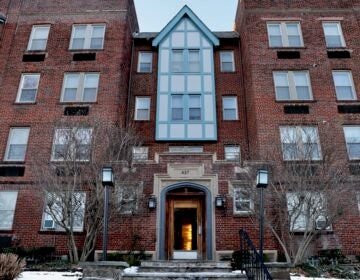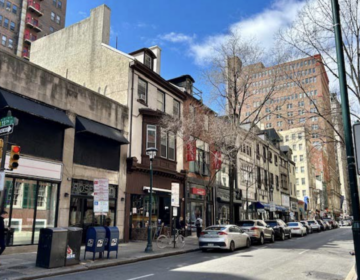Venturi House, Frankford’s Penn Fruit, and Northern Liberties row designated historic
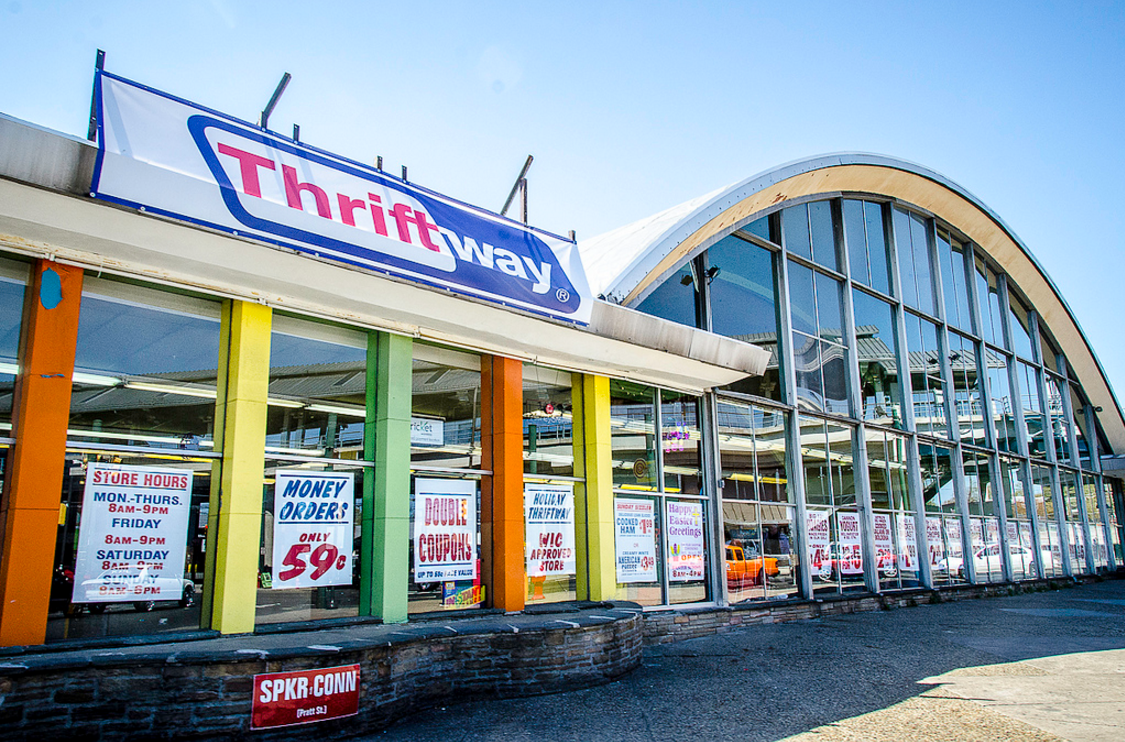
While the commission kicked the can down the road on the case that excited the most attention—the controversial Jewelers’ Row case—several properties were added to the Philadelphia Register of Historic Places: The Vanna Venturi house in Chestnut Hill, the old Penn Fruit grocery in Frankford, and a 200-year-old row of houses at 81-95 Fairmount Avenue in Northern Liberties.
The latter case dragged on for many months and provoked the most heated discussion not relate to Jewelers’ Row at the meeting. On September 9th, the commission voted three times on the Fairmount Avenue block, an impressively intact, now interconnected, row of 1820s-era Federal-style rowhouses—one of the few remaining on the Delaware Riverfront.
“I actually think those are some the most important undesignated historic properties in the city,” said Oscar Beisert, a preservation activist who helped lead the fight to protect the buildings. “For a long time that’s what Philadelphia was, right on the waterfront. And all of that is gone. In many ways that row represents what Philadelphia was like in the area where they put I-95.”
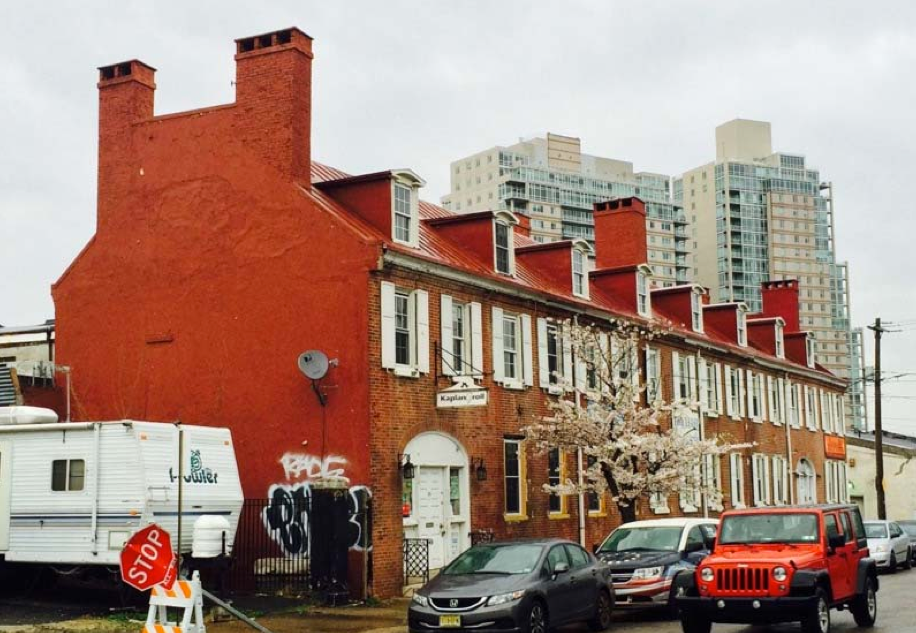
But the three motions at the September meeting left the commission deadlocked on the case because of a tie vote and a negative vote on some of the criteria (a few members of the body weren’t there that day, which complicated the outcomes). In the October meeting the commission debated whether those votes constituted “final action”, effectively meaning a rejection of the nomination, or if it meant that the commission could still consider the case.
If the nomination had been rejected, the buildings would no longer have been under the Historical Commission’s purview. At the October meeting John Farnham, executive director of the Historical Commission, said he believed that the tie vote meant that instead the nomination was still under consideration, and the commission’s jurisdiction, were preserved.
But at last Thursday’s meeting controversy swirled around a confidential memorandum penned by the Law Department that reinforced Farnham’s position, which argued that the tie votes meant that no action has been taken. Farnham said that he’d been instructed that he could read from the content of the memorandum, but that no copies could be provided to individuals not serving on the commission.
The lawyer for the property owner, Michael Sklaroff, was not happy about this state of affairs.
“At the last meeting I said there was a legal question here, I thought we would have a dialogue,” said Sklaroff. “I said we weren’t going to move forward to demolish in any event…. I proposed to consider it for 30 days but with the understanding that I and the commission would hear from the Law Department. The whole point of this was clarity.”
Sklaroff’s attempt to open debate on the question was punctuated by periodic calls to order from Beisert, who insisted the lawyer had asked for the continuance to give his expert a chance to testify against the nomination. Sklaroff even threatened to leave at one point, as it became clear the commission would vote on the nomination again. He insisted that they’d presented their case against it in September and that he and his client had “no further interest.” But in the end, they remained anyway.
Sklaroff’s dominance at the head of the table, where he reframed his question several times, provoked much annoyance from the crowd. But the lawyer doggedly soldiered on, insisting that the jurisdiction of the commission lapsed because they failed to nominate the property at the September meeting.
“We are here today because we received crystal clear advice that there was no change of the status quo as a result of the three votes at the September commission meeting,” insisted Farnham. In the end the commission voted 6-to-3 to add the buildings to the register.

The debate over the old Penn Fruit grocery store at the northeastern terminus of the Market-Frankford El proved controversial, if less heated. The building is distinguished by the soaring arch-roof and glass curtain wall, which affords an extensive view of the interior, both of which are typical of the defunct company’s midcentury stores. It was nominated by the Preservation Alliance for Greater Philadelphia, and the commission voted in summer to continue its consideration of potential designation.
The previous occupant of the building, a Holiday Thriftway supermarket, filed for bankruptcy in September. That leaves the neighborhood without a grocery store according to Kim Washington, executive director of the Frankford CDC.
Although Washington very much wants a new supermarket for the neighborhood, her group opposed the nomination of the Penn Fruit building. Frankford CDC fears a historically protected shell of a market would discourage transit oriented development on the property, because it believes the building has been too poorly maintained to be feasibly repurposed. Washington said that the owners of the Holiday Thriftway told her that it would cost hundreds of thousands of dollars to merely keep the refrigeration in the building up to health codes.
Zoning lawyer Carl Primavera said that Rite Aid, which now owns the property, just wants to preserve as much flexibly as possible. He said that there is no demolition permit and no timetable for any project planned for the property.
Primavera brought in Frank Dalmudge, of renowned structural engineering firm Keast & Hood, to buttress the case against the nomination. He described the building’s current state as deplorable, but that it had been constructed in such a way that this stage of decomposition is natural.
“Some buildings are built to be monumental edifices to the organization, others are built purely to take advantage of market conditions at the time,” said Dalmudge. “The Penn Fruit chain as it grew intended to have something that would catch the eye of potential customers, but was built as inexpensively as possible. They did not intend for these to be long term edifices.”
Some members of the commission were generally skeptical of the need to ensure preservation. Architect Antonio Fiol-Silva argued that the Penn Fruit building’s suburban-style mid-century modern design was alien to the neighborhood of tightly knit, pre-automobile era row homes.
But the chair of the commission, architect Bob Thomas, expressed support for the Preservation Alliance for Greater Philadelphia’s case, particularly the building unique character and scarcity, as so few of the old Penn Fruit buildings are extant. The commission voted to add it to the register on the grounds of its significant character and distinctive architecture.
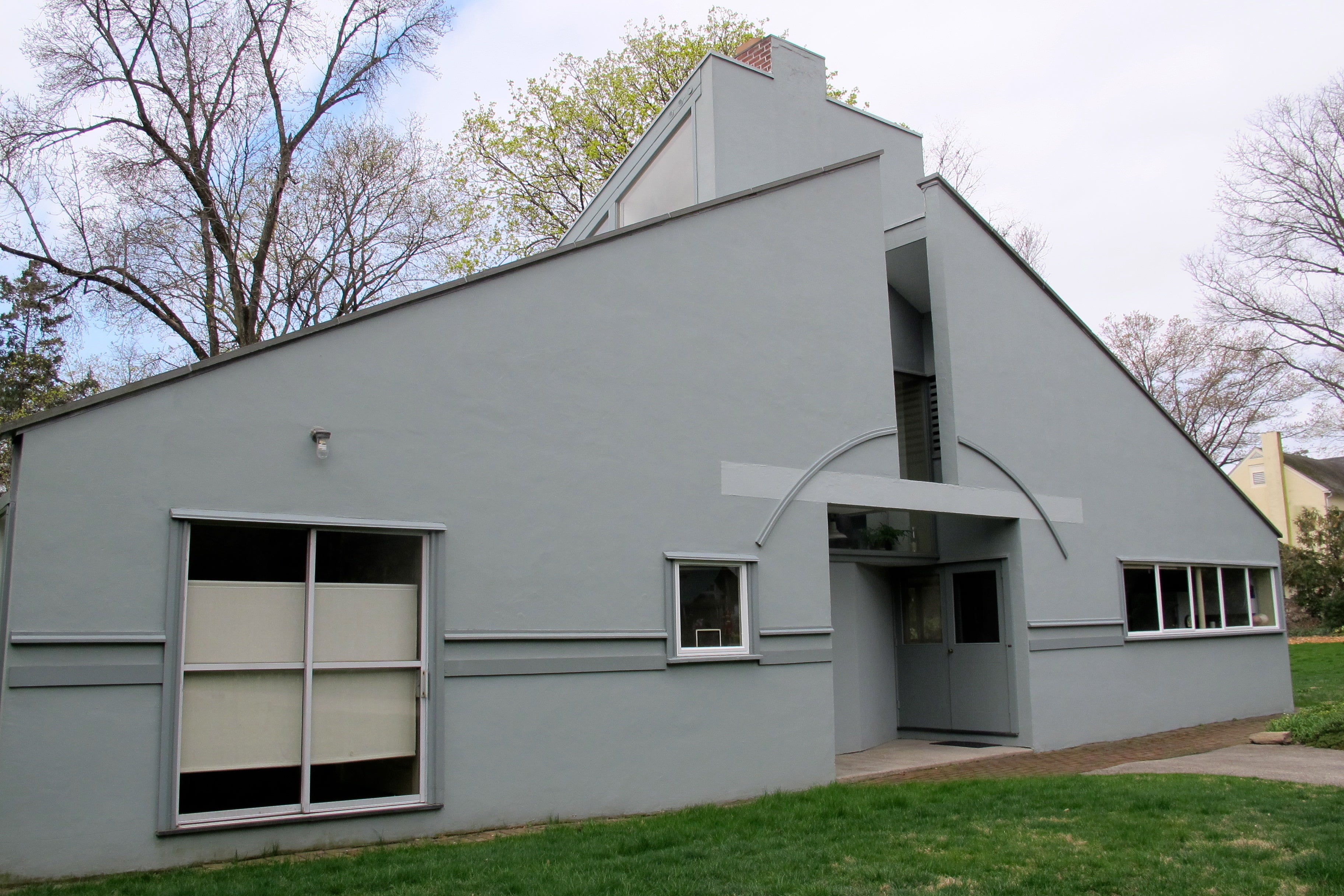
After a nomination first heard last December, Vanna Venturi House was added to the register with universal glee, although the case dragged on for about thirty minutes as the new owner—who had purchased it to preserve it—quizzed the commission on exactly what they meant by the word “property” and whether modifications to the grounds would be allowed.
Last Thursday’s meeting wasn’t all good news for preservationists. In a case reminiscent of the murkiness surrounding Jewelers’ Row, the Jacob Deal Frame Dwelling at 227 E. Allen Street in Fishtown received a continuance as well.
In October 2015, a building permit was issued on the almost 190-year old two story wood frame house. The building’s nomination wasn’t submitted until April 2016. There was some question of whether the building permit was still valid if construction hadn’t begun yet, and if the developer would make the building eligible for action from the Historical Commission by updating project permits.
Building permits remain valid for six months after they are issued, but may be renewed. Those for the Allen Street house were issued over a year ago. But Andrew Miller, the representative for the owner, said that demo had already occurred at the rear of the property so the permit was still active.
Miller argued that there was a question of whether the commission could still try to act to preserve the building. He framed the legalities as being of the same murky hue that shades the Jewelers’ Row case, and a case on Chestnut Street earlier in the year that has thus far preserved a building where the demolition permit was issued before the nomination.
“If we don’t get clear indication from this commission on how these matters will be handled then we are left to guess, we are left to argue these issues,” said Miller in his plea that the commission issue a continuance on the venerable Fishtown property. “If there is a pending application or a pending permit that precedes the nomination then I urge this commission to table the matter so your ability to act in the future is preserved.”
But commissioner Michael Fink, a designee from the Department of Licenses & Inspections, said he believed an amended permit would require a new application, and that a literal reading of the code would then make the property subject to historic review. Any application then submitted would be in the commission’s purview. Miller vigorously disputed that claim, saying his client needed to make adjustments to the foundation and that the code couldn’t be read to deny his client the right to address those issues.
Thomas didn’t come down on one side or the other, but consideration of the property was continued until greater clarity can be found on the matter.
“If renewing an amended permit is a new application it has to be looked at to see if it is consistent with the original one,” said Thomas. “I would say the commission would be less likely to agree to doing those things. If someone amends the permit by adding another story that wasn’t in the original application that would not be looked upon favorably.”
Also added to the historic register were the Mifflin-Cope House, at 48-62 E. Penn Street, and the Pennsylvania Working Home for Blind Men at 3514–30 Lancaster Avenue.
WHYY is your source for fact-based, in-depth journalism and information. As a nonprofit organization, we rely on financial support from readers like you. Please give today.




